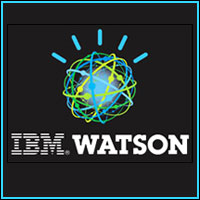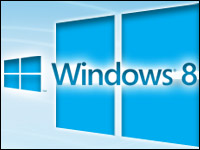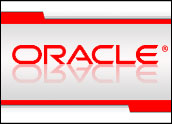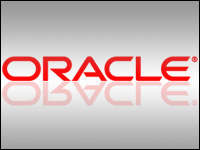
There’s no hotter market in high tech this year than virtual desktop infrastructure (VDI), and you don’t need sales and unit shipment statistics to prove it. No, the best measurement of VDI’s hotness is the sudden flurry of vendor announcements accompanied by a concomitant rise in vendor vitriol.
The main players in the VDI market are actually two sets of pairs. It’s Citrix and Microsoft lining up against VMware and EMC for Round 2 in the ongoing virtualization wars. On March 18, Citrix and Microsoft came out swinging, landing the first potent, preemptive punches right where they hope will hurt VMware the most: in its pocketbook.
Citrix and Microsoft unveiled a series of initiatives that include aggressive promotional pricing deals and more simplified licensing models. To demonstrate just how solid and committed they are to their alliance and taking on and taking down VMware and EMC, the two firms even went so far as to combine their respective VDI graphics technologies.
All of this activity has the makings of a bare-knuckle, no-holds-barred brawl between the two rival factions. At stake is the leadership position in the nascent, but burgeoning global VDI market, which ITIC estimates could generate revenues of US$50 billion worldwide by 2012.
Citrix and Microsoft: On the Offensive
Citrix and Microsoft didn’t just make an announcement: They unveiled a strategy, which is nothing short of a declaring war on VMware/EMC. The Microsoft/Citrix initiatives are aimed at solidifying and expanding their base of current VDI customers while serving the dual purpose of luring VMware customers away from that company’s VDI platform.
They include the following:
- VDI Kick Start — This promotion, which runs from March 18 through December 31, 2010, seeks to jump-start VDI deployments by lowering the entry-level pricing for customers purchasing Microsoft and Citrix technologies. As part of this deal, existing Microsoft client access licensing (CAL) customers will pay $28 per desktop for up to 250 users to purchase the Microsoft Virtual Desktop Infrastructure Suite, Standard edition, and Citrix’s XenDesktop VDI Edition for one year. That’s about a 50 percent discount off the list prices that corporations have paid up until now for their annual CALs.
This is crucial for cost-conscious businesses, because the client access licenses often represent the lion’s share of their licensing deals, since desktops outnumber servers in mid-sized and large enterprises. Additionally, the VDI Kick Start program also gives customers bargain deals. In addition to merging RemoteFX — Microsoft’s 3-D graphics technology for virtual desktops — with Citrix’s high-definition HDX technology, the two companies will offer a price-cutting promotion from March 18 until Dec. 31, 2010.
- Starting July 1, Microsoft SA customers will no longer be required to purchase a separate license to access Windows via a VDI.
- The Microsoft Virtual Desktop Access (VDA) License Plan. Organizations that use thin client devices, which are not included or covered under Microsoft’s SA maintenance plan, can now purchase the VDA licenses at a retail price of $100 per device per annum. This targets those end-users who travel or telecommute and need to use personal devices or public networks to access their corporate data.
- Rescue for VMware VDI — The name says it all; this promotion is a direct attack on VMware. Like the VDI Kick Start program, it runs from March 18 through December 31, 2010. Under the terms of this deal, any Microsoft Software Assurance licensing/maintenance customer can replace its existing VMware View licenses for free. VMware View users who opt out of that platform in favor of the Citrix and Microsoft offerings will receive up to 500 XenDesktop VDI Edition device licenses and up to 500 Microsoft VDI Standard Suite device licenses free for an entire year once they trade in their VMware View licenses.
Dai Vu, Microsoft’s director of virtualization marketing, said the announcements were all about delivering more value to desktop customers and simplifying and extending organizations’ licensing rights.
The Citrix/Microsoft announcements also cement the close working partnership and the “enemy of my enemy is my friend” relationship the two firms have enjoyed for the past several years. By bundling their respective VDI offerings together, the two companies also ensure integration and interoperability, which are crucial components for each and every layer in a virtualized data center environment.
VMware and EMC: Not Standing Still
VMware and EMC executives have yet to publicly respond to the Microsoft/Citrix initiatives. However, it’s almost certain that VMware will have to offer its current and prospective VDI accounts incentives to counter the Microsoft/Citrix alliance. Cash-strapped corporations and IT departments are all on the lookout for topnotch products at bargain basement prices. And it doesn’t get much better for customers than the free Rescue for VMware VDI program.
VMware built up a commanding lead in the server virtualization arena over the last five years by virtue of being first to market and delivering leading-edge features and performance in its signature ESX Server product. VMware’s competitors have spent the last several years playing catch-up in server virtualization. This allowed VMware to charge a premium price for its premier offerings. Depending on the size and scope of the individual organization’s server virtualization deployment, customers paid on average 35 percent to as much as 75 percent more for VMware server-based offerings. There were surprisingly few complaints.
The emerging VDI and application virtualization markets are a different story. Only about 5 percent to 8 percent of organizations worldwide have fully virtualized their desktop infrastructure. So it’s too soon to declare a clear market winner. It’s safe to say that Citrix, Microsoft and VMware are all market leaders in this segment. This time around, though, Microsoft and Citrix are determined not to let VMware and EMC run away with the race by building an insurmountable lead. Meanwhile, VMware and EMC have not been idle. Former Microsoft executive Paul Maritz succeeded VMware founder Diane Greene following her 2008 departure as the company’s president and chief executive officer. Since then, he has made tangible moves to bolster VMware’s position in the VDI and application virtualization arenas. Maritz and EMC CEO Joe Tucci make a formidable combination, as do EMC and VMware.
EMC purchased VMware in 2004 for $635 million, and it owns an 86 percent majority stake in the Palo Alto, Calif.-based server virtualization market leader. In the past several years, VMware’s fortunes and revenues have risen faster than EMC’s have over the last three years. In February, the two firms moved to reposition some of their assets; EMC and VMware inked a deal for VMware to acquire certain software products and expertise from EMC’s Ionix IT management business in an all-cash deal for $200 million. EMC does retain the “Ionix” brand and gets full reseller rights to continue to offer customers the products acquired by VMware. Maritz said VMware’s acquisition of the Ionix products and expertise promises to further establish VMware vCenter as the next-generation management platform for private cloud infrastructures.
The agreement also calls for VMware to take control of all the technology and intellectual property of FastScale. EMC acquired FastScale in 2009. The company’s FastScale Composer Suite incorporates integrated software management tools to enable organizations to maintain peak performance in a virtualized environment.
Also in recent weeks, VMware introduced a new version of its ThinApp application virtualization package designed to simplify the migration to Windows 7.
End-Users Are the Biggest Winners
Vendor wars are nothing new. What makes the latest conflict for VDI market dominance different is the extreme actions the combatants are willing to take in order to retain and gain customers at their rivals’ expense.
With last week’s joint announcements and deepening partnership, Citrix and Microsoft have jumped out to a lead, but it’s still too early to call the race.
I’m going to go out on a limb here and predict that the biggest winners will be the customers. When several big name vendors vie for the hearts, minds and wallets of customers, it usually means that feature-rich, reliable products get to market sooner at competitive prices. Let’s hope the VDI race is a long one.
Laura DiDio is principal at ITIC, a research and consulting firm that covers the high-tech industry.












































Social Media
See all Social Media